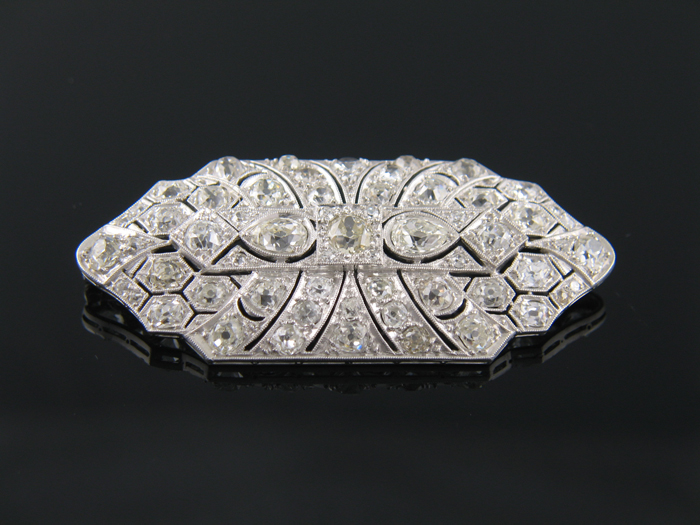The beauty of jewelry is that while its always changing, there are elements that stay the same. Looking at a piece of fine jewelry from a hundred years ago doesn’t seem drastically different than something you might see today.
Take Edwardian jewelry for instance:
Edward VII ascended the throne following the death of his mother, Queen Victoria, in 1901. He and his wife Alexandra set the tone for the Belle Epoque, a time when elegance and fashion became society’s predominant values. New wealth flourished among the upper and middle classes; the automobile, airplane and movie industries were born.
As for fashion, it took on an almost ethereal lightness, with layers of delicate fabrics, lace and feathers.
Antique Jewelry Online gives us a closer glimpse:
Platinum: Platinum’s strength enabled the creation of “invisible” settings, in which very little metal was used to hold a gemstone in place. Such settings complemented fashion’s lightness. Jewelry made with saw-piercing and filigree techniques matched the lacy looks of the era. White gold alloys were developed as a less expensive alternative, and as a substitute for platinum (considered a strategic metal) during WWI. |
|
Diamonds and Pearls: Diamonds and pearls set in platinum were favored for their white-on-white color scheme, and sense of refined elegance and luxury. |
|
Garland Style Motifs: Eighteenth-century decorative motifs, such as swags, bows, ribbons, tassels, wreaths and flower garlands, show the neo-classical and Rococo influences on Edwardian jewelry design. |
|
Necklaces: The new fashion–with its upswept hair, high collars for day and low necklines for evening–emphasized the head and neck. Pendants and lavalieres were widely worn. Particularly popular was the negligee pendant, consisting of two drops of unequal length suspended from a central element. |
|
Indian Influence: When Edward toured India, Alexandra developed a keen interest in the style of the Indian princesses, or Maharajas. This exotic influence started a fashion for diamond aigrettes (feathers worn as hair ornamnets); sautoirs (long ropes of pearls or chain ending in a tassel); and chokers, or “dog collars” (one of Alexandra’s favorite styles). |
|
Brooches: Circle brooches and bar pins, particularly with lacy filigree designs, were very fashionable. Stars and crescents were also popular. |
|
Amethyst: A favorite stone of Alexandra’s, amethyst was often included in jewelry of the era. The combination of these violet stones with white pearls and green peridots represented the colors of the suffragette movement; the “g,” “w,” and “v” stood for “give women the vote.” |



